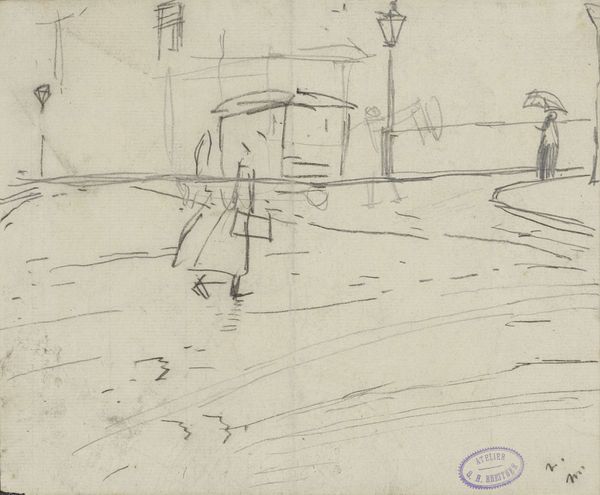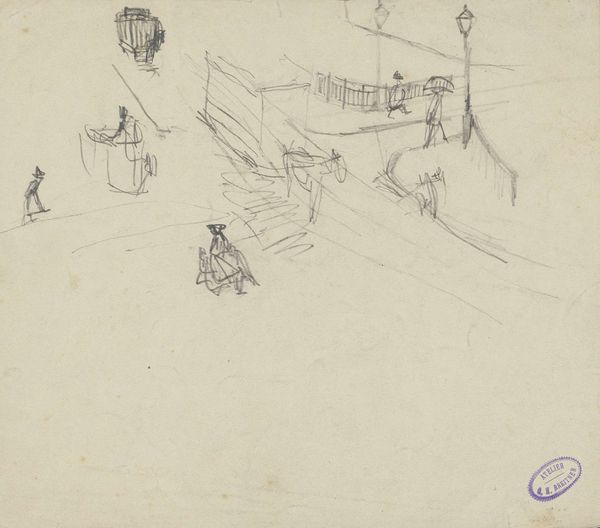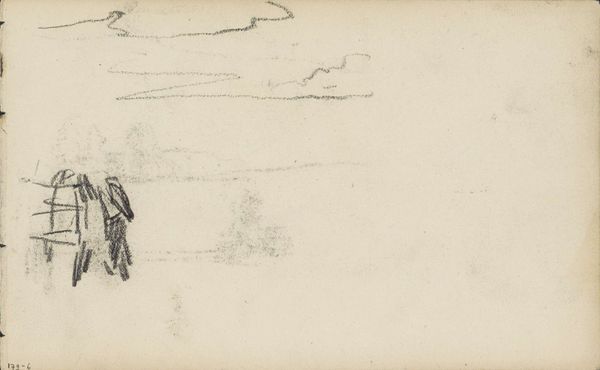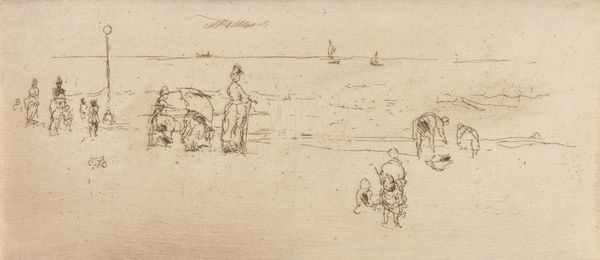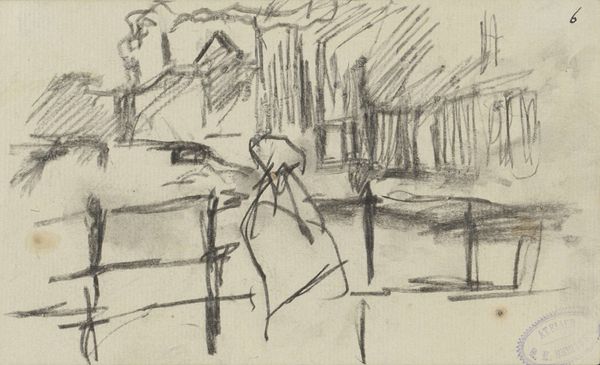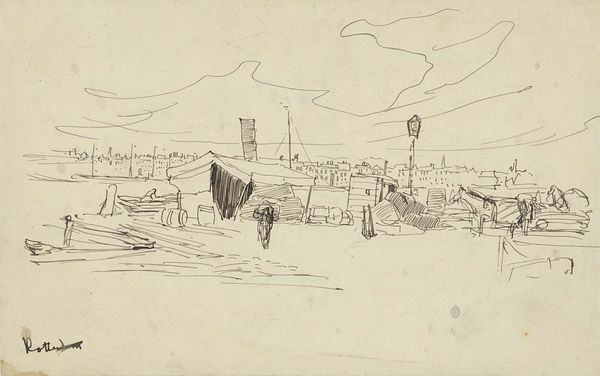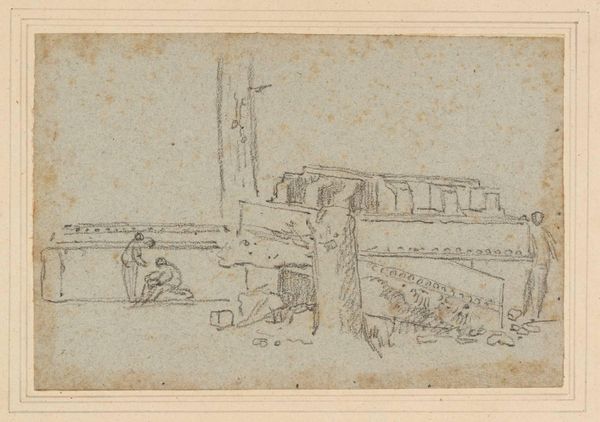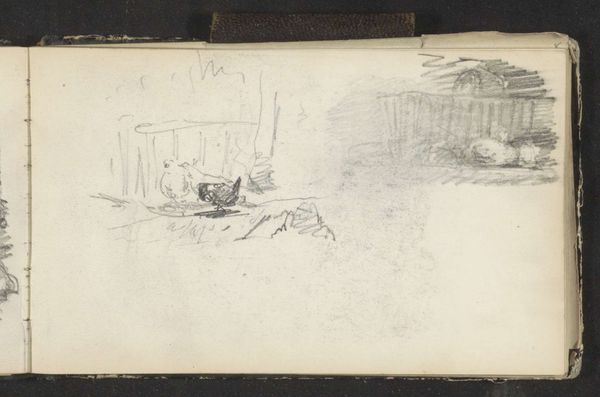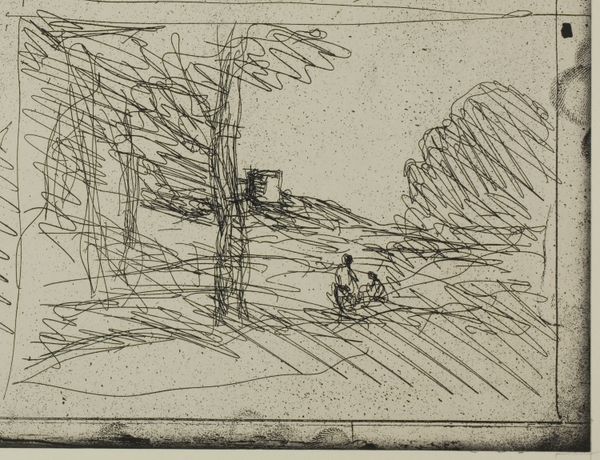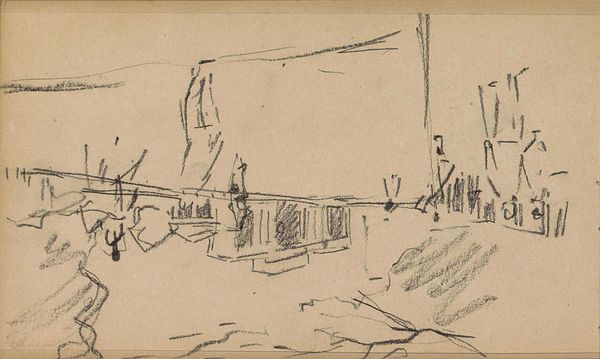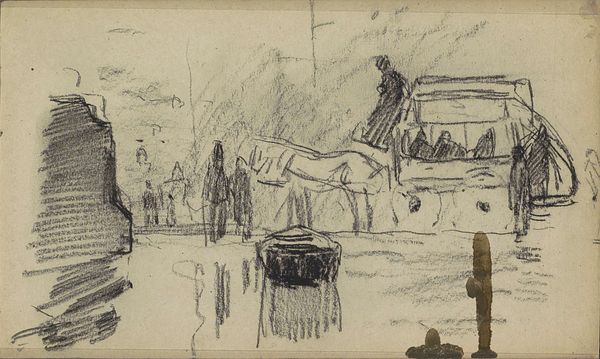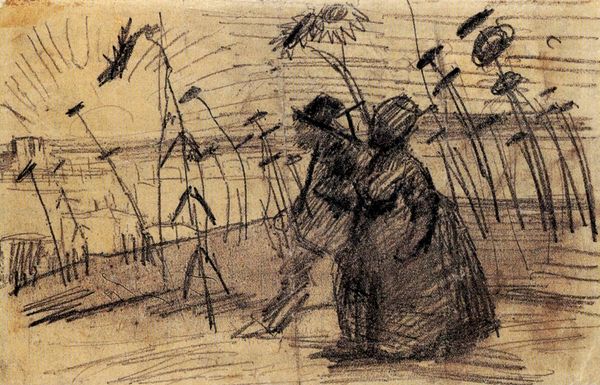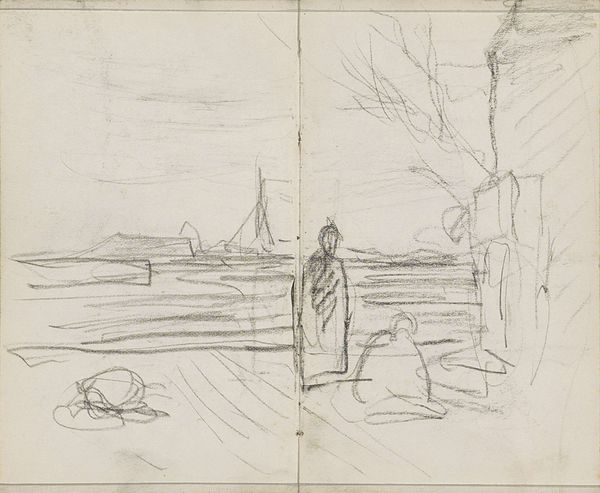
drawing, ink
#
drawing
#
impressionism
#
pen sketch
#
landscape
#
ink
Copyright: Public Domain: Artvee
Curator: Here we have James Abbott McNeill Whistler's "Fishing Quay, Ostend," an ink drawing from 1887. What strikes you first about it? Editor: The sheer sparseness of it! The drawing uses such a minimal vocabulary of lines to suggest the hustle and bustle of a harbour scene. There is almost a casual lightness in the way it’s structured. Curator: And consider what “casual lightness” might mean in the late 19th century. Ostend, a port city in Belgium, was rapidly changing, becoming a popular, and rather crowded, tourist destination. Whistler often portrayed such scenes of modern life but approached it, at times, through a class lens; for example, observe the pair of figures in the foreground that seem to set apart from the bustle in the background. How do they fit into a society experiencing rapid transformation? Editor: You're right, there's a studied elegance in the foreground figures, created with the simplest of means, while the activity behind is almost chaotic by comparison. The line varies remarkably from swift strokes describing the background to the careful, delicate weighting used to give shape and form to the women. It reminds me of aspects of Japanese Ukiyo-e prints— Curator: Precisely, where figures and landscapes aren’t merely aesthetic elements but are tied to socio-economic realities of the floating world and leisure, class, and gender. Whistler, like many artists, engaged with Japonisme, yes. Yet he brings his perspective as an American abroad capturing what may amount to the impact of such tourism on Ostend’s inhabitants. These figures likely lived locally in Ostend; this lends to how we might study gendered positionalities during rapid European globalization. Editor: The drawing definitely speaks to Whistler’s unique eye. You look at it and think, how can so few marks on paper evoke such a strong sense of place and time? Curator: It truly highlights Whistler’s talent, doesn’t it? "Fishing Quay, Ostend," prompts us to contemplate how identity and rapid social change shape our understanding of everyday scenes. Editor: And that is, in part, made possible through this striking combination of formal economy and expressive line. Thank you.
Comments
No comments
Be the first to comment and join the conversation on the ultimate creative platform.
